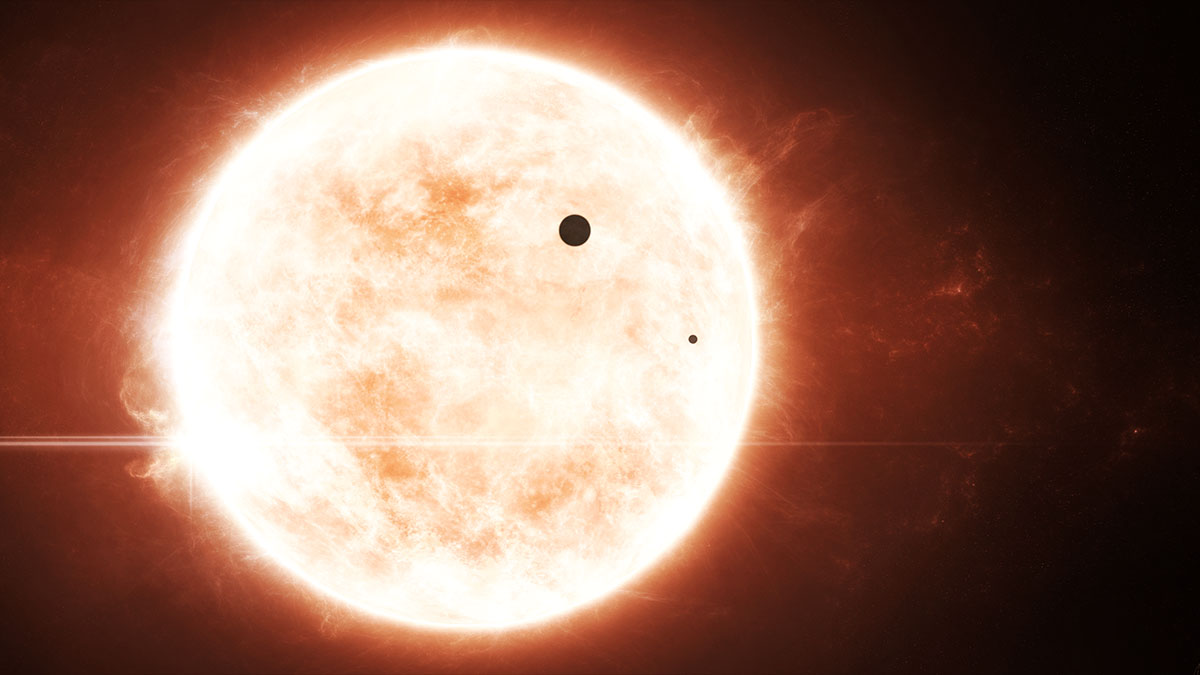todays forecast: solar wind and 4,000F

If you fly by the gas giant WASP-12b about 870 light years away, you might see a brilliant light and feel some heat. And no wonder. You’re only 2 million miles away from its parent star. The planet’s mass, eight times greater than Jupiter’s, triggers coronal mass ejections from the star when the gravitational tides are right. The protuberances shoot out for hundreds of thousands of miles and its radiation bathes the WASP-12b’s upper atmosphere in shimmering auroras while fueling howling winds radiating from the gas giant’s equator.
At 4,000 degrees, the gasses and vaporized metals in WASP-12bs upper atmosphere may be turning into a plasma. Because plasma has a very low density, it would puff out the planet and make it seem larger than it should be which seems to be the case with WASP-12b. Just how hot is 4,000F on a cosmic scale? Red dwarfs, the dominant stars in the Milky Way galaxy are about 20% or so cooler than the planet. Its hotter than most stars out there. Tidally locked to its sun, it doesnt revolve around its axis, but the hemisphere that never sees the light of day would be searing hot nonetheless, warmed by the supersonic winds radiating from the face perpetually staring at WASP-12.
There are a few interesting questions about this superheated world. How did it get within just a days orbit of its sun when the absolute orbital limit before that seemed to be a two and a half days? How would a gas giant which would have to form on the outer reaches of a solar system to stay gaseous, spiral that close to a star? Did it come from another solar system? Did it just drift in? And just how close can a gas giant get to a star without being completely vaporized? Curious minds want to know.





